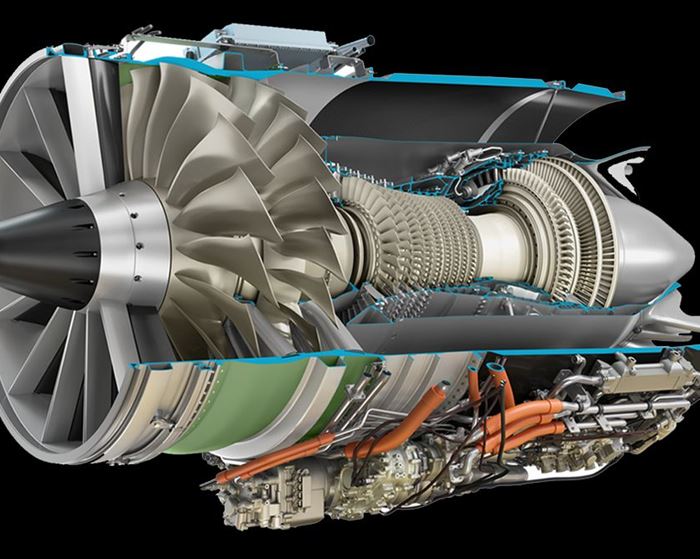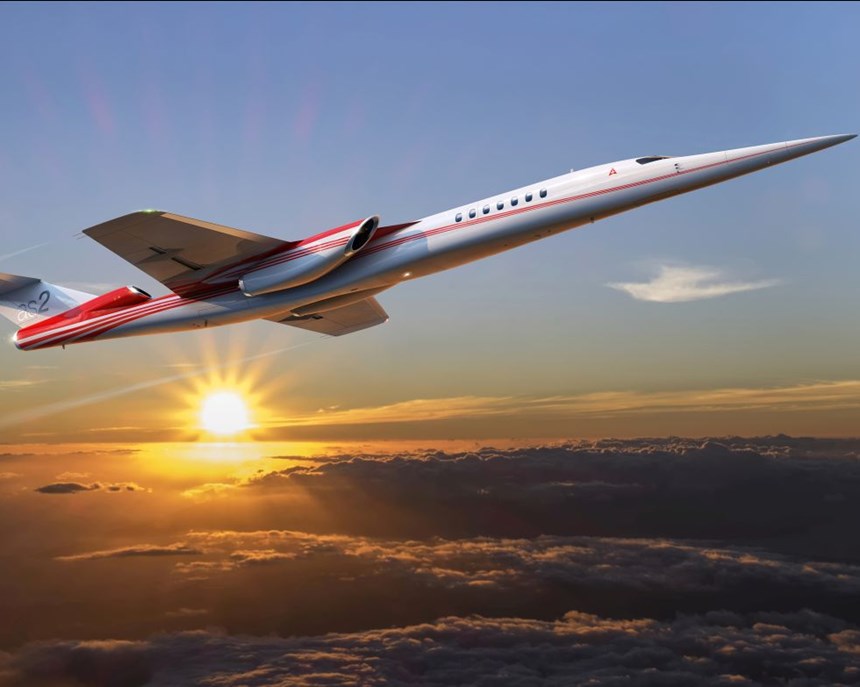Airline travel is poised to become faster
Numerous supersonic concepts were announced at the National Business Aviation Assn. (NBAA) annual meeting in Orlando in October, indicating it is a technology to watch.
The National Business Aviation Assn. (NBAA) held its annual meeting in Orlando at the Orange County Convention Center and the Orlando Executive Airport a couple of weeks ago. The event, which attracted more than 23,000 people from business, government, manufacturing, corporate aviation departments and MRO, generated considerable news, including an update on Reno, Nevada-based Aerion Supersonic. Aerion CEO Tom Vice announced at NBAA on October 15 that the company, working in close collaboration with Lockheed Martin and GE Aviation, has concluded the conceptual design phase for the AS2 supersonic business jet and has now embarked on preliminary design—a phase that will conclude in June 2020: “We’re on track to fly in 2023, and before that year is out cross the Atlantic at supersonic speed, which will be the first supersonic crossing since the Concorde’s retirement 20 years earlier.”
Vice went on to say “Aerion and our AS2 industry team, comprised of Lockheed Martin, GE Aviation, and Honeywell, have solved many of the tremendous challenges in creating a supersonic renaissance. We’ve overcome some huge technical hurdles and we’re confident we’ll meet Stage 5 takeoff and landing noise requirements [a new noise standard more stringent than current requirements]. We’ve made strides in structures and systems. We’re recruiting top tier suppliers. And we’re attracting the best and brightest engineering talent to the program as we grow our organization.”
At a joint press conference on the same day with Aerion, GE Aviation announced that it has completed the initial design of the AffinityTM turbofan, the first supersonic engine purpose-built for business jets. GE says the new engine class is optimized for supersonic flight and will be timed to meet the Aerion AS2 launch date. According to the company, the Affinity is a new class of medium bypass ratio engines that integrates a unique blend of proven military supersonic experience, commercial reliability and the most advanced business jet engine technologies. CW has reported previously on the Aerion, and the company says virtually all the airframe will be constructed of carbon fiber composites, with titanium used for leading edges and some internal structures (here’s a link: https://www.compositesworld.com/news/aerion-sheds-light-on-supersonic-business-jet ).
Aerion’s history goes back to 1999, when a predecessor company, ASSET Group (Affordable Supersonic Executive Transport), led by supersonic design expert Dr. Richard R. Tracy, began work on supersonic natural laminar flow (SNLF) wings. In 1999 and 2000, ASSET performed supersonic test flights in collaboration with NASA’s Armstrong Flight Research Center (formerly NASA’s Dryden Flight Research Center) confirming predicted levels of SNLF. That work led an investor group headed by Robert M. Bass to acquire ASSET and its team in 2003 with the aim of commercializing the company’s supersonic technology.
Aerion is only one of a number of high-speed aircraft projects, due to a resurgence in demand for Concorde-like, faster-than-sound planes and shorter flight times. Boom Technology is a supersonic startup that is working on a larger 55-seat commercial craft; its smaller-scale demonstrator is almost ready to fly (here’s the link to CW’s 2017 story on Boom: https://www.compositesworld.com/articles/supersonic-flight-goes-commercial-again ). NASA is involved in a supersonic project with Lockheed Martin, with the goal of reducing or eliminating sonic booms. Now under construction at LM’s Skunk Works plant in Palmdale, California, the X-59 QueSST is designed so that when flying supersonic, people on the ground will hear nothing more than a sonic thump – if anything at all. NASA says that once fully tested and pronounced safe to fly within the US national airspace, the X-59 in late 2022 will begin making supersonic flights over select communities to measure residents’ reactions to any noise they might hear. And, Boeing is looking ahead to the company’s first passenger-carrying hypersonic concept that was debuted at the American Institute of Aeronautics and Astronautics (AIAA) conference in Atlanta in June. Boeing says engineers are working companywide to develop enabling technology will position the company for the time when customers and markets are ready to reap the benefits of hypersonic flight. Kevin Bowcutt, senior technical fellow and chief scientist of hypersonics, say “Boeing is building upon a foundation of six decades of work designing, developing and flying experimental hypersonic vehicles, which makes us the right company to lead the effort in bringing this technology to market in the future.” A hypersonic plane might fly in 20 to 30 years from now, adds Bowcutt.
So it will be interesting to watch these supersonic concepts develop, and which composite or multi-material solutions make them possible.
Related Content
TU Munich develops cuboidal conformable tanks using carbon fiber composites for increased hydrogen storage
Flat tank enabling standard platform for BEV and FCEV uses thermoplastic and thermoset composites, overwrapped skeleton design in pursuit of 25% more H2 storage.
Read MoreParis Air Show 2023 highlights
The Paris Air Show, one of the largest aerospace trade shows in the world, returned for the first time since 2019 and proved that the global aviation industry industry is very much alive and kicking.
Read MoreOverair's Butterfly eVTOL prototype to integrate composites-intensive design
Aiming for first flight tests in the latter half of 2023, Overair’s Butterfly aircraft uses Toray carbon fiber/epoxy prepreg strategically to cut weight on its battery-powered, quiet aircraft.
Read MoreCryo-compressed hydrogen, the best solution for storage and refueling stations?
Cryomotive’s CRYOGAS solution claims the highest storage density, lowest refueling cost and widest operating range without H2 losses while using one-fifth the carbon fiber required in compressed gas tanks.
Read MoreRead Next
CW’s 2024 Top Shops survey offers new approach to benchmarking
Respondents that complete the survey by April 30, 2024, have the chance to be recognized as an honoree.
Read MoreFrom the CW Archives: The tale of the thermoplastic cryotank
In 2006, guest columnist Bob Hartunian related the story of his efforts two decades prior, while at McDonnell Douglas, to develop a thermoplastic composite crytank for hydrogen storage. He learned a lot of lessons.
Read MoreComposites end markets: Energy (2024)
Composites are used widely in oil/gas, wind and other renewable energy applications. Despite market challenges, growth potential and innovation for composites continue.
Read More




























